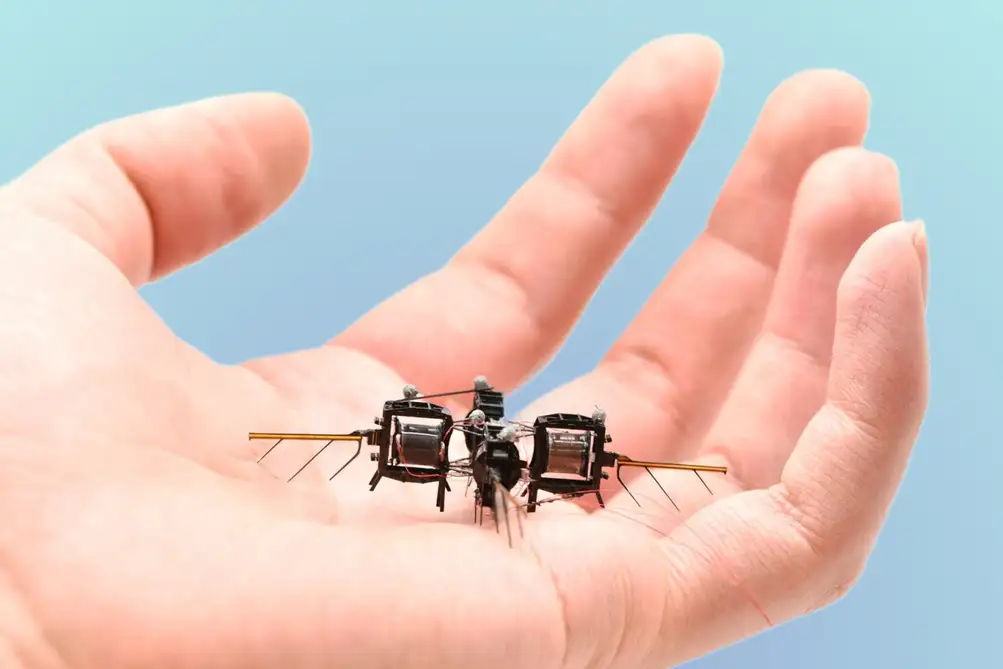A groundbreaking new development in robotics has led to the creation of a tiny insect-like robot capable of performing acrobatic maneuvers such as flipping, looping, and hovering for up to 15 minutes. This remarkable achievement brings us closer to creating robots that can mimic the agility and versatility of insects, with potential applications ranging from environmental monitoring to search and rescue operations.
Designed to replicate the lightweight and highly maneuverable nature of insects, this miniature robot is built with advanced materials and cutting-edge engineering. Its ability to perform intricate aerial movements, such as flips and loops, is made possible by its small size and innovative design, which incorporates flexible wings that provide excellent lift and control. Unlike traditional drones, which rely on rigid structures, this robot’s insect-like agility allows it to navigate tight spaces and complex environments with ease.
The robot’s ability to hover for up to 15 minutes on a single charge is another impressive feature. This extended flight time sets it apart from other small drones, which often have limited battery life. The secret behind its efficiency lies in its lightweight construction and optimized energy use, making it ideal for tasks that require prolonged flight or hovering in place.
Such a robot could revolutionize industries that rely on precision and flexibility, such as agriculture, environmental monitoring, and disaster response. In agriculture, for instance, this robot could be used to monitor crops and assess plant health from a bird’s-eye view, providing data that could help farmers make better decisions. In search and rescue missions, its ability to fly in confined spaces and hover for long periods could help locate survivors in disaster-stricken areas, offering a significant advantage over traditional drones.
Additionally, the robot’s compact size makes it ideal for deployment in challenging environments, such as urban areas, dense forests, or narrow building interiors. Its agility allows it to navigate spaces that would be inaccessible to larger drones or other traditional robots, opening up new possibilities for remote sensing, inspection, and surveillance.
This insect-inspired robot represents a significant step forward in robotics, combining high mobility, energy efficiency, and extended flight time. As the technology continues to evolve, we can expect to see even more advanced, versatile robots that push the boundaries of what is possible in autonomous systems.
Get the latest updates on Energy, Construction, Engineering, and Cryptocurrency. Join us on WhatsApp or Telegram for real-time news. Have a report or article? Send it to report@epci.ng. Follow us on X (Twitter), Instagram, LinkedIn, and Facebook for more industry insights.
